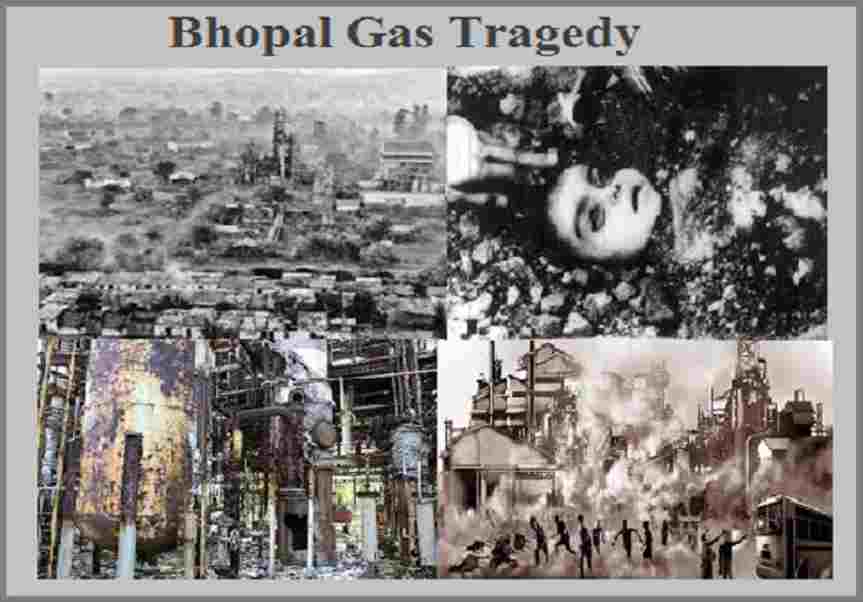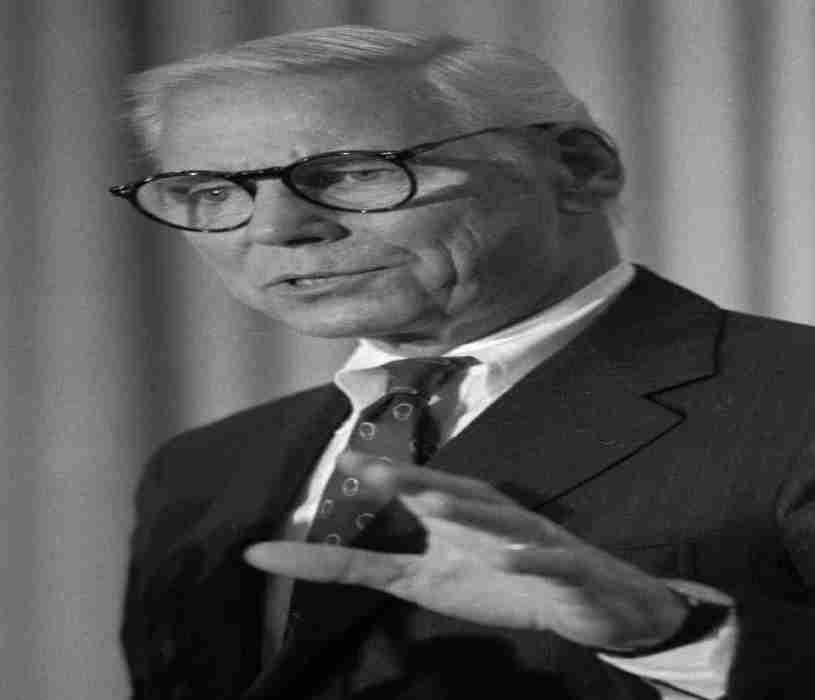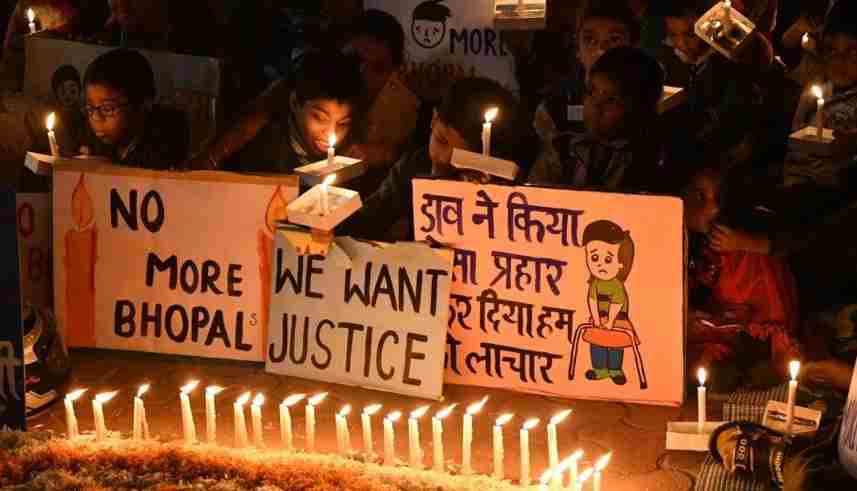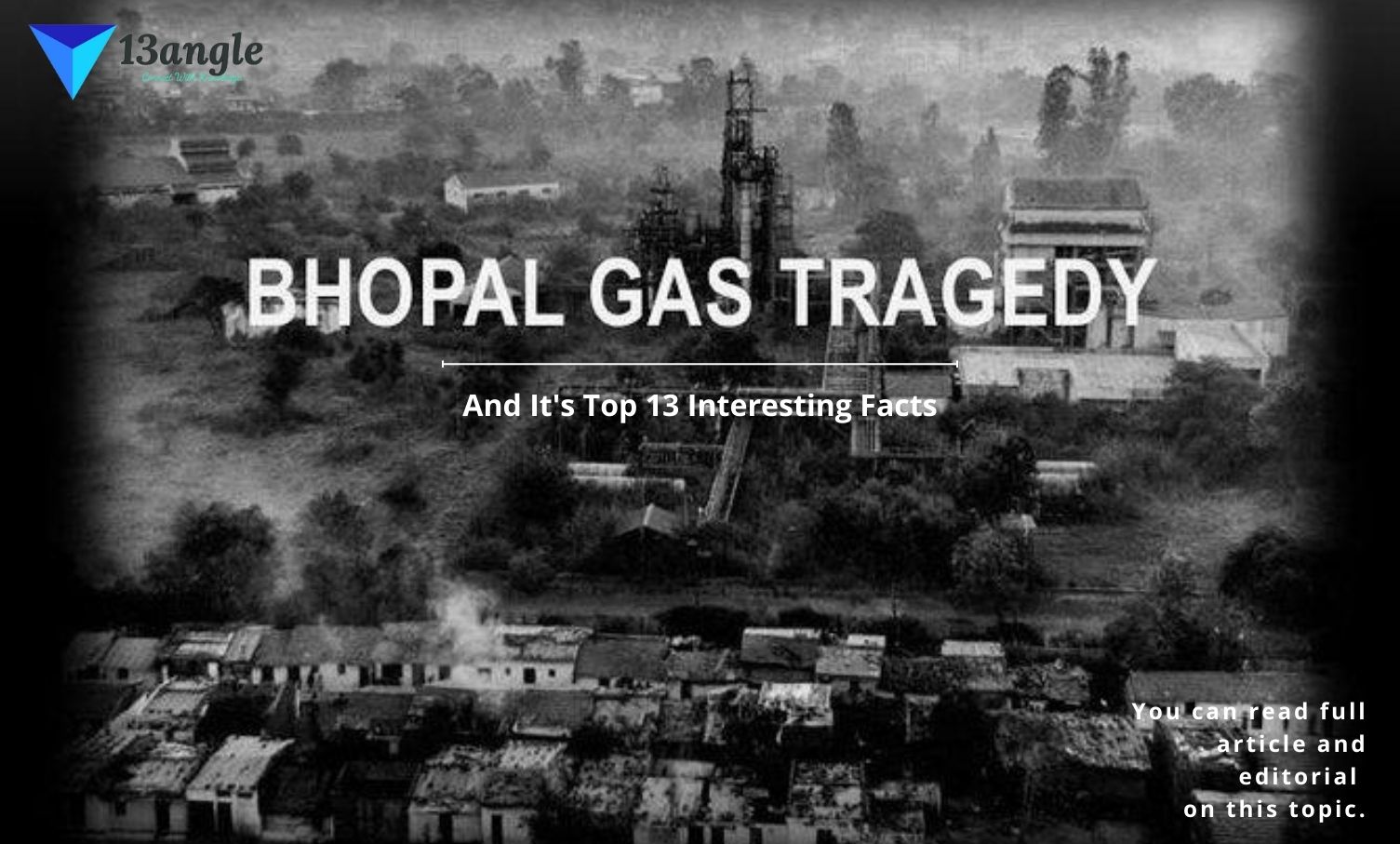- Umang Sagar
- Recent article, Tragedy
The Bhopal Gas Tragedy

- The most terrifying night in the history of Bhopal. One night that changed the fortunes for many. What was it all about? How did that happen? Who let that happen? An incident that still shakes the souls of the people. Thousands of people who were living a happy regular life had no clue of what was about to come.
What Is The Bhopal Gas Disaster?

The Bhopal gas tragedy is considered the worst industrial disaster in the world ever. It took place on the night of December 1984. Around midnight, some workers on duty at an insecticide manufacturing industry in Bhopal complained that their eyes were burning. They thought it must be a gas leak and started investigating.
One of the workers came across liquid dripping out of a pipe, along with yellow gas, and informed his supervisor. But the supervisor assumed that it must be water, and since it was such a huge plant, he thought such small leakages were usual. He thought of having a tea break before looking into the matter. Little did he know that this was not a common leakage but a death note for thousands in Bhopal.

- Around 12:15 AM, while the workers were on a tea break, they felt the smell getting strong, their eyes started burning, and they had a bad bout of coughing. Within two hours, the gas spread around the city carried by air, and over the next two days, took thousands of innocent lives.

- The biggest question to arise here is who was responsible for the accident? Was the company that owned this factory at fault? Were the workers at fault? Or should the government be blamed?
The Union Carbide Factory

- The industry of Bhopal where the disaster took place was a factory of the union carbide company. A company older than 100 years was built-in 1969 to produce the pesticide Sevin using methyl isocyanate. Not only pesticides and batteries, but this company also makes rocket fuel. It is a global company that generally generates chemicals for manufacturing these products. The company was successful in India and was popularly known as UCIL (Union Carbide India Limited). Indian investors owned 49% of its stakes, and even the government has ownership of this company.
Prediction Of The Tragedy

1980 is a crucial year in the story as it marks the beginning of red alerts for the company. Because of the shortage of money, the company decided to manufacture MIC in India rather than importing it. Manufacturing chemicals is never safe, but UCIL got permission from the government, and they started to do so at their manufacturing plant. There was no evacuation plan for the citizens of Bhopal in case of a severe gas leak.
A worker died due to exposure to MIC in 1981, but the company did not take any action. During the same period, the sales of seven started falling. Many companies stepped into the competition and sold products at a low price, which built pressure over the union carbide company. The company had to make changes in the cost-plan for which they reduced the MRP of their products.
They had to cut costs at various places, apparently compromising the quality. They reduced the labor, and the new workers were comparatively less qualified. Safety measures were at stake. For instance, broken pipes were either repaired by unsafe methods or replaced with low-quality pipes.
There were regular leaks in the factory even the workers were worried about it. The citizens of Bhopal were unaware of the hazardous chemical manufacturing in their city, and the workers did not have complete information about it either.
Now the question arises: did nobody notice all this? People did sense the upcoming tragedy. The trade unions of that area protested about the ignorance of public safety in the factory, but the union leader got fired, and their demands were unheard. A man was very interested in the case because he had a personal stake in it.
Mohammad Ashraf, the worker who died in 1881, told his friend that he was worried about the plant. He was concerned that the plant was not working the way it should and informed his friend Rajkumar Keswani, a journalist, about his concerns, and he began investigating. After digging out confidential information and accessing the paper works, he wrote a report about the horrible condition of the factory. The headline was ”Save the City.” In that report, he mentioned that there could be a tragedy soon. Almost 20% of the population of Bhopal lived near the Union Carbide plant, and the possible gas leakage could be disastrous.
He did not have any scientific knowledge but read somewhere that phosgene was present at the plant. He recalled that it is the same gas that was used in Germany during World War I in the gas chambers. And that is when he realized the seriousness of the situation. The report’s name was ”You will demolish if you won’t understand.” He tried his best by writing to the chief minister and the Supreme Court. But till the disaster took place, neither the government took him seriously nor the plant. Even his friends used to tell him that he was wasting his time and that nobody was ever going to consider his claims.
Origin Of The Disaster

As mentioned above, MIC manufactured in the plant was stored in liquid form in three huge tanks underground: E610, E611, and E619. 610 and 611 were filled with MIC, but 619 was kept empty for emergencies. In the filled tanks the MIC was supposed to be 60% only of the total volume of the tank. The reason is, MIC+water is a deadly combination and the reaction is hazardous.
If MIC gets in contact with water or air (as air contains water molecules), a poisonous gas is released by the reaction. To prevent MIC from this reaction, the rest of the tank was filled with pressurized nitrogen. The temperature and pressure of the tank were checked and regulated regularly. So in the three tanks side by side, there were two pipes connected. One pipe was used to send out the poisonous gasses out of the tank so they could be burnt. The other was used to fill the tank with nitrogen.

The workers on duty had a job cleaning the pipes regularly to avoid any sort of blockage. Around the period, the tanks were filled more than 60% of the total capacity and that night, the third tank was also filled with MIC which was supposed to be empty for emergencies. It was all done to save money. Secondly, the pressure indicator was not working, and the pressure in two of the tanks was not correct. There used to be an alarm for the temperature, which was disconnected by the company years before.
The company had stopped manufacturing MIC in October 1984 and the MIC which was remaining in the tank was kept to be taken in use when needed.
The Black Night For Bhopal

People in Bhopal, living their regular lives, had no clue about what was coming. The night of 2nd December 1984 turned out to be the night of hell for the citizens. A cold night in December when everyone was probably under their quilts. Around 9 PM, workers changed their shift, and workers at the MIC section started their work by cleaning the pipes.
While pouring water into the pipes they noticed that the water was not coming out from the other end. To fix the clogging, they started cleaning the pipes and repeated the process. Even after trying multiple times, the water didn’t come out of the other end. They were not surprised and told their supervisor. Now it was the supervisor’s fault that he did not consider the issue seriously and asked the workers to let the water flow through the pipes for a while and the worker of the next shift will switch off the water later. Usually, there is a slip bind on the pipes that resists water from entering the tanks. But on these pipes, there was no slip.

Around 10 PM, water started entering tank 610 which held a lot of mics. And as we know, MIC+water is a deadly combination. MIC started reacting with the water and formed a cloud of poisonous gasses. But as mentioned before, the workers of the factory did not have proper scientific information about the chemical. After an hour the shift changed, the new workers realized that their eyes were burning and some of them were coughing badly. They checked the pressure in tanks, which was a little above the normal bar, but they thought that wasn’t a risk at that time.
When their eyes didn’t stop burning, they realized that it might be a leakage in any of the tanks and started inspecting. A worker, Suman Dey noticed a liquid dripping somewhere near the tanks. What exactly happened in the next one hour is still debatable but it is believed that the worker’s team ignored the leakage and took a break. Some say that the panic had already been in the air before the break and it was the supervisor’s fault for not taking the leak seriously. Around 12:30, workers realized that there had been a blunder. Not only the pressure readings were already very high, but the pressure kept building up in the tanks.
The tanks were underground, so the ceiling about the tanks started breaking apart. Suman rushed to the control room to ring the alarm and this was the point when the water that was left running in the pipes to wash them was turned off. It was already too late. The poisonous gasses were evacuated via a vent gas scrubber system which burnt the gagged. As the pressure increased, the gasses were burnt and released into the air. Moreover, the workers sprayed water over the releasing gas which made the situation worse.
It was around 1 AM when everybody present at the plant realized that now the situation is out of control and cannot be redeemed. Workers, supervisors, and everybody else started evacuating the factory, and post 1 AM, the city of Bhopal was in the grips of terror. The gas reached almost all the corners of the city, including the railway station. People started coughing and came out of their homes, opened doors or windows causing more gas to enter their homes. A woman from the tribes situated near the plant recalled how a white cloud of gas entered her home which ultimately turned out to be the invitation of death. Some died while sleeping and some died running for their life, trying to escape from the merchant of death.
People were taken to the hospital, but the doctors had no clue about what was to be done in such a case. They were not trained for a poisonous gas leakage around the city and had no idea about what treatment was to be given to the patients, who were struggling for their life. For the first few hours, the doctors couldn’t even recognize the problem, they didn’t know which gas was leaking and how it was affecting human organs. Patients were availed with artificial oxygen because of the breathing issues, but more oxygen made the condition worse as oxygen carries water molecules. Many patients died in the hospitals too.
The scenario of the next morning was worse than anyone could imagine. Thousands of dead bodies lay on the roads. Animals were dead and the rest were still struggling to breathe. And it becomes India’s worst industrial disaster.
Actions Taken By The Government

- As the news spread around the nation the next day, now it was to be seen what steps our government takes after such a big disaster. The first thing that happens is that Union Carbide sends their technical team to India and the team converts the MIC into less dangerous gas. This operation was called Operation Faith. Secondly, as the Union Carbide was questioned, they sent relief funds to India. They gave millions to the government, The Red Cross, and other relief organizations.
The Legal Battle

Press conferences were called and Warren Anderson, the chairman of The Union Carbide, took the responsibility into his own hands. He got arrested the very next day but the legal team of the company was getting ready for all the legal rebellion that they were about to face.
This marked the beginning of a legal battle, a battle that continues to date. The government of India passed The Bhopal Gas Leak Act in March 1985, which allowed the government of India to represent the victims of Bhopal in the court. The government of India and Union Carbide started investigating the case and both agreed that the actual cause for the accident was the reaction of water and MIC.
Who Is To Be Blamed?
- The government claimed that Union Carbide was at fault as it did not maintain the safety standards and the staff was not trained properly. Whereas, the union carbide accused the government of not allowing them to make changes in the safety design. They claimed that this is not the fault of the company but the workers who were on duty around the period were at fault. They even claimed that the staff had sabotaged the plant and intentionally added water in the tanks.
Other Unproven Theories

In 2003, Ingrid Eckerman, a doctor who was studying the Bhopal case in detail, wrote in her book that eventually, the court did not find any evidence of the workers sabotaging the plant and internationally adding water to it, which The Union Carbide was claiming. Other theories were that anti-soviet forces were involved in the accident who were sent from America.
The court case comes to an end in 1989, and the Union carbide decides to pay 470 million dollars to the government of India as compensation, which was around ₹800 crore Indian rupees at that time.
The Protests

- The story did not end there because the residents of Madhya Pradesh were not happy. Union Carbide paid the compensation to the government and that was not enough to prevail justice, so they protested.
- In February 1989, Satish Dhawan, once a chairperson of ISRO, filed a petition to protest against this and the case reopens again. Warren Anderson and the Indian workers present at the plant that night were accused by the court as the offenders.
Follow-Up

- Over the next few years, a lot of things happened. Court cases after court cases, but the conclusion came up when the court declared Union Carbide and Warren Anderson to be the criminals. The Indians who were accused paid fine and Warren Anderson did not appear in the court for once, he died of natural causes in 2014. The case against Union Carbide is still open. The victims from the accident who are suffering to date have filed many petitions in the court, demanding compensation and many of these cases are open to date.
Amendment In The Laws

- With time, the government also realized that they do not have the right laws to hold people accountable, in case of such an accident. For the same reason, the first law that was brought was the Environment Protection Act. This act ensures that the industries take steps to protect the environment and in the same year, a new clause was added to the Factories Act, which clearly stated who shall be deemed to be the occupier of the factory, a company or a person who is to be held responsible for the safety of the factory and before this clause there was no clear definition of it. Over the next few years, more such laws were introduced to support the victims of industrial disasters. Some laws were to determine the number of hazardous materials that can be stored in factories.

- The condition of factories in India has become comparatively better but the victims of The Bhopal Gas Tragedy still await justice.
Popular Culture
Many novels, music, film, and series were made based on the tragic story of the Bhopal disaster. In 2002, Amulya Malladi wrote a novel named A Breath of Fresh Air, about a mother and son who develop health issues as a result of exposure to poisonous gas. Arundhati Roy’s novel The Ministry of Utmost Happiness has several characters who are dealing with the after-effects of the gas leak. Annie Murray’s Mother and Child are based in post-disaster Bhopal. Indra Sinha wrote Animal’s people, the story of a boy who is born with a spinal condition due to the effects of a gas leak.
B. Dolan’s RSVP (aka “Lucifer”), Renauld’s Morts Les enfants, and Revolting Cocks by Union Carbide, Bhopal are some of the music that was based on this tragedy.
Tapan Bose made Bhopal: Beyond Genocide in 1986, a documentary film based on the disaster. This film won the National Award for Best Non-Feature Film. In 1999, a Hindi film, Bhopal Express was released which was based on the tragedy, featuring Kay Kay Menon and Naseeruddin Shah. A historical drama, Bhopal: A Prayer for Rain was released in 2014, which was the 30th anniversary of the disaster.
An upcoming series called “The Railwaymen” is going to be released on 2nd December 2022 which was the date of the incident. The plot of the series is based upon The Bhopal Gas Tragedy, featuring Divyendu Sharma, Kay Kay Menon, R. Madhavan, and Babil Khan. This series is directed by Shiv Rawal and produced by YRF Entertainment.
Top 13 Interesting Facts About Bhopal Disaster
The Bhopal Gas Tragedy is the biggest industrial disaster that has ever taken place in history.
Rajkumar Keswani, a journalist, predicted the tragedy and wrote about the upcoming disaster.
The government only officially claimed 5,295 deaths in total but activists put that number closer to 25,000.
Seven employees of UCC were convicted of criminal charges and spent time in prison.
The CEO of UCC at the time of the leak Warren Anderson was charged with manslaughter over the incident by Indian authorities.
Other industrial disasters that have occurred include the Halifax ship explosion (with a cargo of high explosives) of 1917 that killed 2,000 and the Port Chicago Disaster (munitions explosion) of 1944 that killed 320 people.
As a face-saving exercise aimed at the US people, Union Carbide Chief puts out a controversial theory of an imaginary “disgruntled employee”, who deliberately sabotaged the whole system single-handedly.
There were some reported incidents in which some locals did not run away but stayed home and survived.
There was great corruption that took place at the time of distribution of compensation money to the victims.
The compensation arrived in the form of 200 Rs per month installments, no sooner than the early 90s. People who survived were promised to be given 35K per person. The dead are received to the tune of 1L per person.
Elders recall some of the frauds that took place after this incident. Some foreigners (from all parts of the world) were quick to arrive and got documents signed by the local public.
Children born to parents in Bhopal following the gas leak have been born with twisted arms and legs, musculoskeletal disorders, and brain damage.
Seven employees of UCC were convicted of criminal charges and spent time in prison.
Some FAQs Or Also Ask Question
What happened in the Bhopal gas tragedy?
The Bhopal gas tragedy is considered the worst industrial disaster in the world ever. It took place on the night of December 1984. Around midnight, some workers on duty at an insecticide manufacturing industry in Bhopal complained that their eyes were burning. They thought it must be a gas leak and started investigating. One of the workers came across liquid dripping out of a pipe, along with yellow gas, and informed his supervisor. But the supervisor assumed that it must be water, and since it was such a huge plant, he thought such small leakages were usual. He thought of having a tea break before looking into the matter. Little did he know that this was not a common leakage but a death note for thousands in Bhopal.
Who is responsible for Bhopal gas tragedy?
The government claimed that Union Carbide was at fault as it did not maintain the safety standards and the staff was not trained properly. Whereas, the union carbide accused the government of not allowing them to make changes in the safety design. They claimed that this is not the fault of the company but the workers who were on duty around the period were at fault. They even claimed that the staff had sabotaged the plant and intentionally added water in the tanks.
Is Bhopal still toxic?
Groundwater found near the site of the world’s worst chemical industrial accident in Bhopal is still toxic and poisoning residents a quarter of a century after a gas leak there killed thousands, two studies have revealed. So it can be said that teh city is still baring consequences of the 25 years old tragedy
What were the four main demands of Bhopal gas victims?
=> The victims of the Bhopal gas tragedy demanded the following things:
- Proper medical treatment of the victims;
- Adequate compensation;
- Fixing criminal responsibility for the disaster on the management of the company;
- Steps to prevent such disasters in the future.
Did victims of Bhopal gas tragedy get justice?
Over the next few years, a lot of things happened. Court cases after court cases, but the conclusion came up when the court declared Union Carbide and Warren Anderson to be the criminals. The Indians who were accused paid fine and Warren Anderson did not appear in the court for once, he died of natural causes in 2014. The case against Union Carbide is still open. The victims from the accident who are suffering to date have filed many petitions in the court, demanding compensation and many of these cases are open to date.




